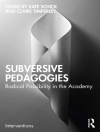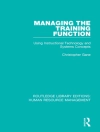Imagine using an evidence-based risk management model that enables researchers and practitioners alike to analyze the spatial dynamics of crime, allocate resources, and implement custom crime and risk reduction strategies that are transparent, measurable, and effective.
Risk Terrain Modeling (RTM) diagnoses the spatial attractors of criminal behavior and makes accurate forecasts of where crime will occur at the microlevel. RTM informs...
Mục lục
List of Figures
List of Tables
Preface
Acknowledgments
Prologue
1. Explaining the Contexts of Crime
2. Risk Terrain Modeling Methods
3. Crime Emergence, Persistence,...
Giới thiệu về tác giả
Joel M. Caplan is Associate Professor at Rutgers University, School of Criminal Justice.Leslie W. Kennedy is University Professor at Rutgers University, S...












